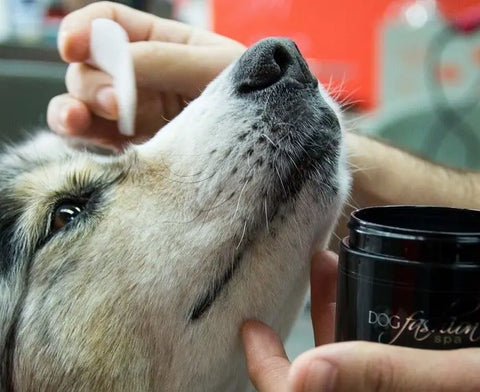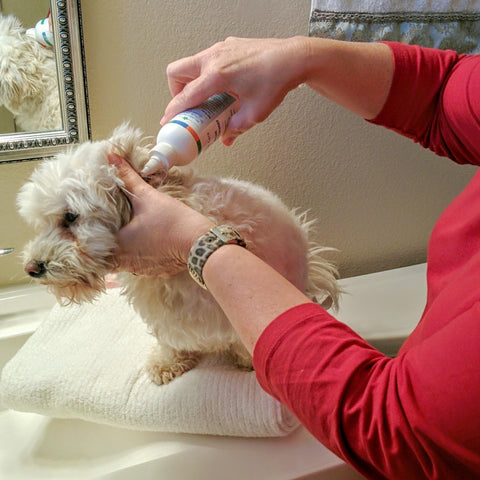Introduction
Begin by explaining the importance of ear care for dogs. Highlight how a dog's ears are sensitive and prone to infections, parasites, and other issues if not properly maintained. Emphasize the benefits of regular ear cleaning, including preventing ear infections, reducing discomfort, and ensuring the overall health and comfort of the dog.
Understanding Dog Ear Anatomy and Common Problems
1. Basic Ear Anatomy
- Structure of the Ear: Describe the basic anatomy of a dog’s ear, including the outer ear (pinna), ear canal, eardrum, middle ear, and inner ear.
- Functions: Explain the functions of these parts and how they contribute to a dog’s hearing and balance.
2. Common Ear Problems
- Ear Infections: Discuss the causes and symptoms of ear infections, such as bacteria, yeast, and allergies.
- Ear Mites: Explain how ear mites can cause irritation and discomfort, leading to scratching and further complications.
- Wax Buildup: Highlight how excessive wax buildup can block the ear canal and lead to infections.
Signs of Ear Problems in Dogs
1. Visible Symptoms
- Redness and Swelling: Describe how redness and swelling in and around the ear can indicate an infection or irritation.
- Discharge and Odor: Explain how discharge and a foul odor are signs of an underlying ear problem that needs attention.
2. Behavioral Symptoms
- Scratching and Pawing: Discuss how excessive scratching or pawing at the ears can indicate discomfort or irritation.
- Head Shaking: Explain how frequent head shaking is a common sign of ear issues, as the dog tries to relieve discomfort.

The Importance of Regular Ear Cleaning
1. Preventing Infections
- Removing Debris: Emphasize the importance of removing dirt, wax, and other debris to prevent infections.
- Maintaining Ear Health: Highlight how regular cleaning maintains the overall health of the ear canal and prevents the growth of harmful bacteria and yeast.
2. Early Detection of Issues
- Routine Checks: Discuss how regular ear cleaning allows for routine checks that can help detect early signs of problems.
- Prompt Treatment: Explain how early detection leads to prompt treatment, preventing minor issues from becoming major health problems.
How to Clean Your Dog’s Ears Safely
1. Choosing the Right Tools
- Ear Cleaning Solution: Recommend using a vet-approved ear cleaning solution to ensure safety and effectiveness.
- Cotton Balls and Pads: Suggest using cotton balls or pads instead of cotton swabs, which can push debris further into the ear canal.
2. Step-by-Step Cleaning Process
- Preparation: Explain the importance of preparing the dog and the cleaning materials before starting the process.
- Applying the Solution: Provide detailed steps on how to apply the ear cleaning solution, ensuring it reaches the ear canal without causing discomfort.
- Massaging the Base of the Ear: Describe how to gently massage the base of the ear to help loosen debris and wax.
- Wiping Away Debris: Explain how to use cotton balls or pads to wipe away the loosened debris and excess solution.

Tips for Effective Ear Cleaning
1. Frequency of Cleaning
- Regular Schedule: Recommend a regular cleaning schedule based on the dog’s breed, activity level, and ear health.
- Individual Needs: Highlight how some dogs may require more frequent cleaning due to factors like floppy ears or a history of ear infections.
2. Creating a Positive Experience
- Positive Reinforcement: Discuss the importance of using treats and praise to create a positive association with ear cleaning.
- Gentle Handling: Emphasize the need for gentle handling to prevent causing stress or discomfort to the dog.
Preventative Measures for Ear Health
1. Monitoring for Signs of Problems
- Regular Checks: Suggest incorporating regular ear checks into the grooming routine to catch any signs of problems early.
- Veterinary Visits: Recommend regular veterinary visits to ensure the dog’s ears are healthy and to get professional advice on ear care.
2. Maintaining Overall Hygiene
- Bathing and Grooming: Discuss how regular bathing and grooming help maintain overall hygiene, reducing the risk of ear infections.
- Trimming Hair: Highlight the importance of trimming excess hair around the ears to improve air circulation and prevent debris buildup.

Addressing Specific Ear Conditions
1. Dealing with Ear Infections
- Symptoms and Treatment: Describe the symptoms of ear infections and the importance of seeking veterinary treatment.
- Home Care Tips: Provide tips on managing ear infections at home, such as administering prescribed medications and keeping the ears clean.
2. Managing Ear Mites
- Identifying Ear Mites: Explain how to identify the presence of ear mites through symptoms like black discharge and intense scratching.
- Treatment Options: Discuss treatment options, including veterinary treatments and home remedies.
Case Studies and Testimonials
1. Real-Life Experiences
- Owner Testimonials: Share testimonials from dog owners who have successfully maintained their dogs’ ear health through regular cleaning.
- Positive Outcomes: Highlight the positive outcomes and benefits of diligent ear care practices.
Conclusion
Summarize the key points about the importance of keeping a dog’s ears clean, emphasizing the benefits of regular ear cleaning, early detection of issues, and maintaining overall ear health. Highlight the long-term benefits for the dog’s comfort and well-being.
Call to Action
Encourage readers to start implementing these ear care tips and to share their experiences or additional tips in the comments section. Invite them to subscribe to the blog for more pet care tips and advice.
